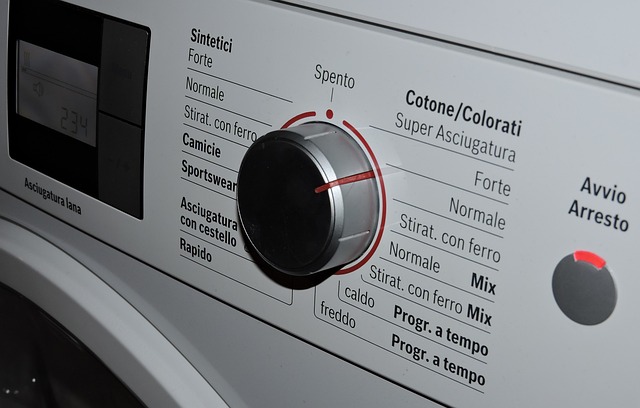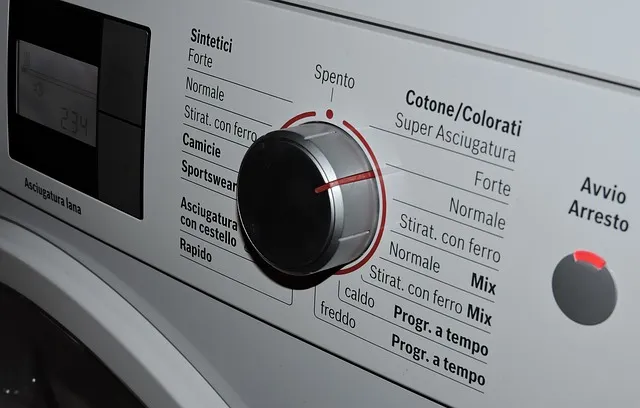What Are the Energy-Saving Benefits of Timed Dry vs. Auto Dry?
Timed Dry is like setting a kitchen timer for your clothes. You manually select how long you want the dryer to run, giving you full control over the drying process. If you’re good at estimating how long your clothes need, you can save energy by avoiding over-drying. It’s like baking a cake and setting the timer just right – you get exactly what you need without wasting any extra energy.
On the other hand, Auto Dry is a bit like having a smart assistant in the laundry room. This setting uses sensors to detect when your clothes are dry and automatically stops the dryer. It’s great because it adapts to varying loads and fabric types, ensuring that your clothes are never over-dried. Imagine having a built-in expert who knows precisely when to stop, so you’re not running the dryer longer than necessary.
In terms of energy efficiency, Auto Dry often has the upper hand. Because it uses sensors to end the cycle as soon as clothes are dry, it tends to consume less energy compared to Timed Dry, where you might guess wrong and overuse power. Picture this: Auto Dry is like having a GPS that guides you to your destination without detours, while Timed Dry is like setting out on a journey with a fixed map that might not always be accurate.
So, if you’re looking to cut down on energy costs and avoid unnecessary drying, Auto Dry might be your best bet. It’s like having a smart, energy-efficient partner in your laundry routine.
Timed Dry vs. Auto Dry: Unveiling the Energy Savings You Didn’t Know You Needed
First up, Timed Dry. Think of it like setting a stopwatch for your laundry. You choose the drying time, and off it goes, running until the clock runs out. It’s straightforward and gives you control, but here’s the kicker—it might not always be the most energy-efficient option. Imagine baking cookies and setting the timer for 30 minutes, even though they only need 20. You’re wasting energy, and those cookies are overdone.
Enter Auto Dry. This clever feature works more like a high-tech kitchen assistant, sensing when your clothes are dry and stopping the cycle automatically. It’s like having a friend who knows exactly when your cookies are done without you needing to check the oven. By monitoring moisture levels, Auto Dry ensures that your clothes aren’t over-dried, which not only saves energy but also extends the life of your fabrics. It’s a win-win!
Now, let’s talk numbers. Using Timed Dry can lead to more energy consumption since the dryer might run longer than necessary. On the other hand, Auto Dry adjusts in real-time, making it a smarter choice for energy savings. Picture your dryer as a savvy financial advisor—it knows when to stop spending (or in this case, drying) and keeps your utility bills in check.
So, next time you’re choosing between these drying modes, think of Auto Dry as your personal energy-saving guru, saving both your clothes and your wallet from unnecessary wear and tear.
How Timed Dry Can Slash Your Energy Bills Compared to Auto Dry
Think of your dryer as a very diligent but sometimes overzealous worker. Auto Dry is like having a team member who keeps working until they think the job is done—sometimes they stop early, sometimes they go a bit overboard. This approach can lead to unnecessary energy consumption because the dryer might run longer than needed, consuming more power.

Now, Timed Dry is like having a precise technician with a clear plan. You set the timer for exactly how long you want the dryer to run, and that’s it. It’s as if you’re saying, “I want this task done in 45 minutes, no more, no less.” This method can be a game changer for your energy bills. By controlling the drying time yourself, you avoid over-drying, which means less wasted energy.

Here’s a neat trick: if you’re drying a small load, you can set the timer for a shorter period. This way, you’re not heating and spinning empty air or clothes that don’t need the full drying cycle. It’s all about efficiency—getting the job done right without excess.
In essence, Timed Dry allows you to take the reins and manage energy use with precision. You get to decide exactly how long your clothes need to dry, which can lead to more efficient energy consumption and, ultimately, lower utility bills. It’s a simple switch that can make a surprisingly big difference.
The Ultimate Showdown: Timed Dry vs. Auto Dry and Their Impact on Your Energy Usage
First up, Timed Dry. Think of it as setting a timer on your phone: you choose how long the drying cycle runs, and that’s it. It’s straightforward and perfect when you have a set drying time in mind. But here’s the catch: if you misjudge, you could end up wasting energy. Imagine setting a timer for 60 minutes, only to find your clothes are dry after 40. You’ve just spent extra energy and time running a cycle that wasn’t needed.
On the flip side, we have Auto Dry. This is like having a built-in smart assistant for your laundry. The dryer’s sensors measure moisture levels and automatically stop the cycle when your clothes are perfectly dry. It’s like having a friend who knows exactly when to call you just before you start worrying. This method is generally more energy-efficient because it tailors the drying time to your load, reducing unnecessary drying and cutting down on your energy consumption.
Here’s where it gets interesting: while Auto Dry might seem like the smarter choice, it can be slightly more expensive upfront due to its advanced features. However, it often pays off in the long run. Timed Dry, while cheaper, can lead to higher energy costs if not managed carefully.
So, which one is right for you? If you’re all about precision and saving on your energy bill, Auto Dry is probably the way to go. But if you prefer a more hands-on approach and don’t mind keeping an eye on your drying cycles, Timed Dry can still get the job done efficiently.
Is Timed Dry the Secret to Lower Energy Costs? A Deep Dive into Its Efficiency
Timed Dry is like having a personal assistant for your dryer. Instead of just letting it run on a whim, which can waste energy and leave your clothes damp or over-dried, Timed Dry lets you set the exact duration for your drying cycle. It’s the Goldilocks approach – not too short, not too long, but just right. By precisely controlling the drying time, you’re optimizing energy usage and avoiding the inefficiencies of those “auto dry” cycles that often overestimate the time needed.
Think of it this way: if you’ve ever seen a recipe that says “bake until golden brown,” you know it’s a little vague. Timed Dry removes that guesswork. By programming your dryer for just the right amount of time, you ensure that clothes come out perfectly dried and ready to wear, without the energy waste of running the dryer for an extra hour.
But here’s where the real savings come in. By avoiding over-drying, you reduce the strain on your dryer and extend its lifespan. Less wear and tear means fewer repairs and replacements. Plus, you’re lowering your electricity usage, which translates directly into savings on your energy bills.
So, next time you toss in a load of laundry, consider using Timed Dry. It’s like having a finely tuned instrument at your disposal, ensuring your clothes are dry, your energy bills are lower, and you’ve got more time to enjoy the things you love.
Auto Dry vs. Timed Dry: Which Method Offers Greater Energy Savings?
Auto dry settings use moisture sensors to detect when your clothes are completely dry. It’s like having a built-in helper that knows exactly when your clothes are done, preventing over-drying and wasting energy. Imagine it as a smart friend who tells you when it’s time to stop baking your cookies – no more, no less.
On the other hand, timed dry operates on a fixed schedule. You set the timer, and the dryer runs for that specific duration, regardless of whether your clothes are actually dry or not. It’s akin to setting a timer for your workout and sticking to it, even if you’re already done with your reps.
So, which method is better for saving energy? Auto dry usually wins this battle. Since it stops the drying cycle when your clothes are dry, it avoids the extra energy used when clothes are left in the dryer longer than necessary. Timed dry might seem convenient, but it’s like running your car engine while parked – you’re using more fuel than needed.
Switching to auto dry could be a game-changer for your energy consumption. It’s an effortless way to cut down on electricity use, reduce your bills, and do your part for the environment. So next time you’re in front of the dryer, consider letting auto dry take over and see the difference it can make!
Maximize Your Savings: Why Timed Dry Outperforms Auto Dry in Energy Efficiency
Think of Timed Dry as a precise, strategic move in the game of energy savings. With Timed Dry, you set a specific duration for drying your clothes. This method lets you control exactly how long the dryer runs, preventing it from going beyond the necessary time. If you’ve mastered the art of laundry, you’ll know how long it takes for your clothes to dry based on their type and load size. By setting the timer yourself, you avoid the dryer running longer than needed, which translates directly into reduced energy consumption.
In contrast, Auto Dry operates on a different playing field. It uses sensors to detect moisture levels and automatically adjusts the drying time. While this sounds convenient, it can sometimes lead to over-drying. When the sensors determine that clothes are dry, they might not always get it right, resulting in the dryer running longer than necessary. Over-drying not only wastes energy but can also damage your clothes, leading to higher replacement costs.
By opting for Timed Dry, you’re effectively taking charge of your energy use. It’s like steering the ship of your household energy expenditure, instead of letting sensors and algorithms dictate the course. Plus, with Timed Dry, you can avoid those unexpected spikes in your energy bill and keep your clothes looking fresh for longer.
So, next time you’re doing laundry, remember that a little manual control with Timed Dry could lead to big savings and a smaller environmental footprint. It’s a simple choice with significant benefits for your wallet and the planet.

